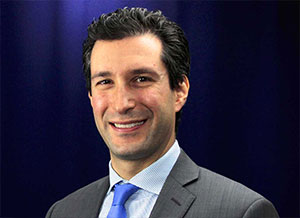Age-Related Macular Degeneration
What is the Macula?
The macula is made up of million of light-sensing cells that provide sharp, central vision. It is the most sensitive part of the retina. It is located at the back of the eye. The retina turns light into electrical signals and then sends these electrical signals through the optic nerve to the brain. There they are translated into images that we see.
What You Should Know….
 Age-related Macular Degeneration (AMD) is a common eye condition and a leading cause of vision loss among people age 50 and older. It is caused by damage to the macula. This can result in blurred, dark and distorted vision.
Age-related Macular Degeneration (AMD) is a common eye condition and a leading cause of vision loss among people age 50 and older. It is caused by damage to the macula. This can result in blurred, dark and distorted vision.
In some people, AMD advances slowly so vision loss does not occur for a long time. In other cases, the disease causes damage much faster and can lead to vision loss in one or both eyes.
Who is at Risk?
Age is a big factor for AMD. The disease is more likely to occur after the age of 60.
Other risk factors include:
- Smoking- Research has proven that smoking doubles the risk for AMD.
- Race- ADM is more common among Caucasians then African Americans or Hispanic/Latinos.
- Family History- People with a family history are at higher risk.
- Obesity- Being severely overweight increases the chance of developing AMD.
Diagnosis and Treatment for Macular Degeneration
How is Macular Degeneration diagnosed?
When seeing an eye care professional, you should receive a comprehensive eye examination. This will perform a retinal examination to help diagnose macular degeneration. If a wet macular degeneration is detected or suspected a special test will be performed, which is called “fluorescein angiography”.
Many people ask, “What causes macular degeneration?” The answer is, there is no one certain thing that causes macular degeneration. However, there does appear to be certain risk factors, some of which include:
• Smoking
• Age
• Gender (women have a slightly higher risk)
• Family History
• High Cholesterol
• Caucasians – (are more like to have macular degeneration than African Americans)
• There are also suggestions that the following have been factors associated with increased risks: visible and UV light, low consumption of fruits and vegetables, light skin color and if you have blue eyes.
Can Macular Degeneration be treated?
Currently, there is no treatment for dry macular degeneration. However, if you have wet macular degeneration, there are intraocular injections that are the mainstay of treatment. Some of these are Avastin®, Lucentis® and Eylea®. One must know that vision that has already been lost may be restored in “some” patients, but not all. If vision cannot be restored, there are low-vision aids that exist that can help improve the quality of life.
Age-Related Macular Degeneration also known as ARMD
Age-Related Macular Degeneration also known as ARMD is a leading cause of legal blindness for people over 60 years old and affects approximately 15 million Americans. Of the 15 million, 1.7 million people experience serious visual impairment. It is estimated by the U.S. government that by 2020, 3 million Americans could be functionally blinded by ARMD.
ARMD does not just affect those who are over 60 years of age, early onset macular degeneration is a genetic disease that can set in somewhere between birth and age 7. Middle-onset macular degeneration can set in between ages 5 to 20. People in their 30’s and 40’s can also have an inherited form of this disease.
Myopic macular degeneration can occur in people who are severely nearsighted; this is due to the elongation of the eyeball. If the retina is stretched it can result in tears in the macula and even bleeding beneath the retina.
Age-Related Macular Degeneration Awareness
 Carl Danzig, M.D.
Carl Danzig, M.D.
Director, Vitreo-Retinal Services
As we turn the calendar to February, the brutal winter continues to pummel our friends and families in the North, while we enjoy the warmth and sunshine down here in Florida. For many Americans, and many of my patients, life can be difficult due to Age-related Macular Degeneration (AMD).
Millions of Americans are affected with approximately 200,000 new cases of AMD being diagnosed every year. Macular degeneration is the leading cause of blindness in this country; however, the majority of patients with AMD never go blind. AMD affects the macula, the area of the retina that is responsible for sharp, central vision. Symptoms may include a change a vision or new waviness to what should be straight lines. Smoking is the only known risk factor that we can modify ourselves. Other factors such as race and family history are out of our control. In patients with AMD, retina specialists recommend eye vitamins with the label AREDS 2 (which stands for Age Related Eye Disease Study 2). It is important to have regular dilated eye exams to check for AMD and imperative if you experience any of the above symptoms. Early detection can mean the difference between saving vision and losing vision.
Macular Degeneration & Low Vision Awareness Month
It’s Age Related Macular Degeneration & Low Vision Awareness Month. The Rand Eye Institute would like to make sure that everyone stays up to date with the risks that come with age and your eyes. Stay tuned for more information about this month’s topic.
